Pachyphytum Succulents 101: Varieties and Care Explained
Get ready to dive into the fascinating world of Pachyphytum succulents! These amazing plants get their name from the Greek words “pachys,” which means thick, and “phytum,” which means plant. And boy, do they live up to their name! Pachyphytum plants have these super thick leaves that are incredibly juicy and come in a dazzling array of colors. They grow in these neat little clusters that look like beautiful rosettes.
Now, we know you’re probably eager to learn more about these fantastic succulents and how to take care of them. That’s why we’ve created this ultimate guide just for you! Inside, you’ll find everything you need to know about different types of Pachyphytum plants and all the tips and tricks to keep them happy and thriving. So, let’s get started and embark on this succulent adventure together!
Contents
Pachyphytum Types and Varieties
Pachyphytum ‘Blue Haze’
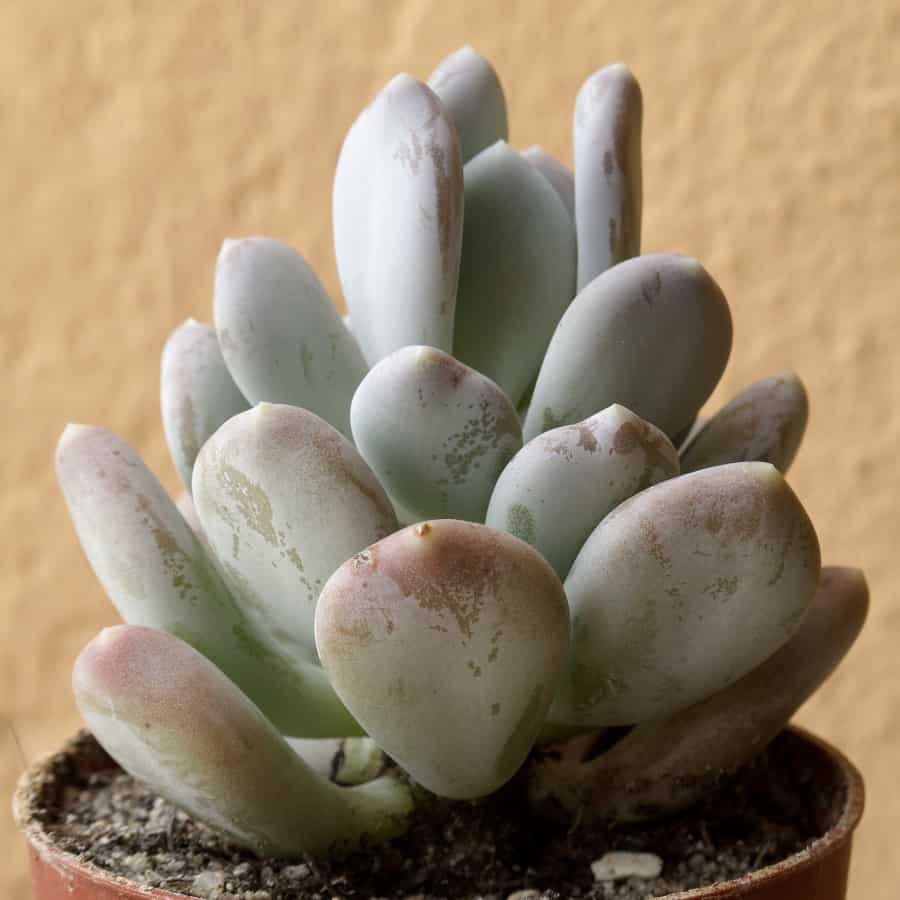
Imagine a succulent that looks like it’s been touched by the sky itself. Pachyphytum ‘Blue Haze’ is one such plant. Its leaves have a stunning silvery-grey color that can even turn a bit pink! And here’s the best part—this Pachyphytum species produces these incredible spikes of flowers that will leave you mesmerized. The entire plant has this cool glaucous bloom, making it a unique and eye-catching addition to your succulent collection.
Pachyphytum bracteosum
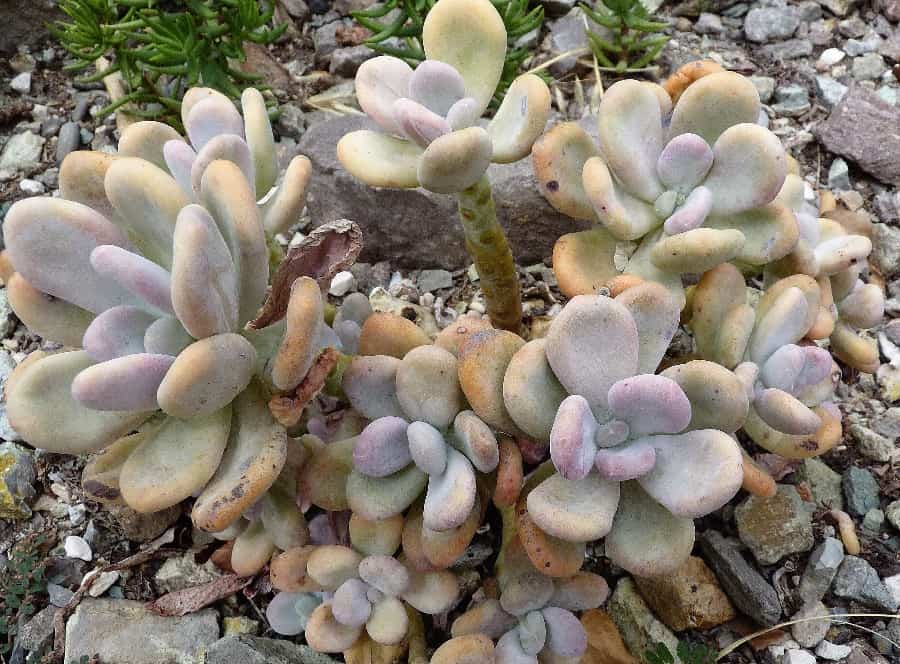
Get ready for a succulent that’s bursting with charm! Pachyphytum bracteosum is a small plant with plump leaves that shine in a silvery-grey shade. But here’s the catch—when this beauty decides to bloom, it produces these striking reddish flowers atop bracteated spikes. It’s like a fireworks show in your garden! The plant itself is covered in a thick glaucous bloom, adding to its allure. Trust us, you won’t be able to take your eyes off this captivating plant.
Pachyphytum brevifolium
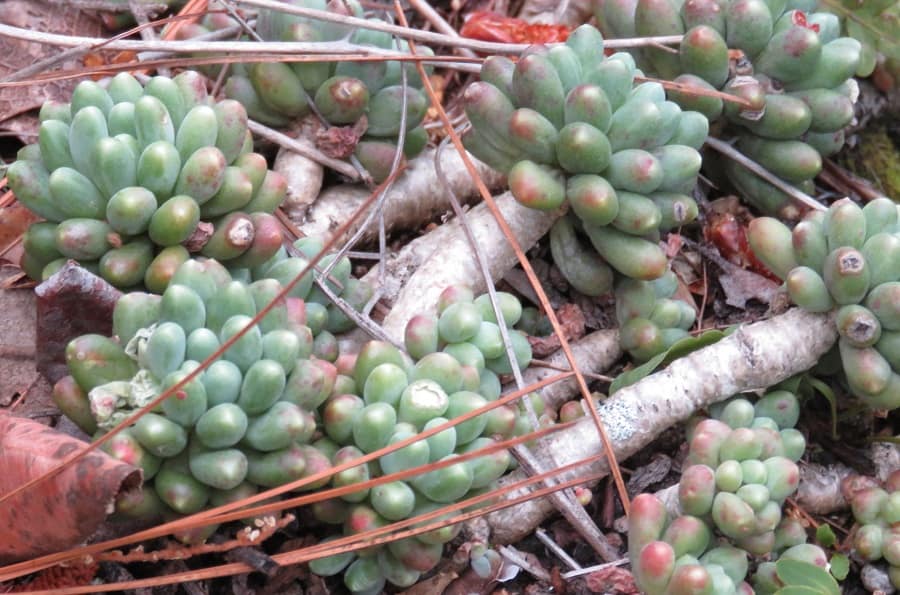
If you’re looking for a succulent that truly stands out, Pachyphytum brevifolium is the one for you. This unique plant grows in a way that forms a short-stemmed, tightly packed rosette near the crown. Not only that, but the leaves of this beauty have a distinct pattern and come in a variety of lovely colors. When exposed to chilly weather or drought, the colors become even more vibrant, creating a stunning display. It’s like having a work of art in your own backyard.
Pachyphytum caesium
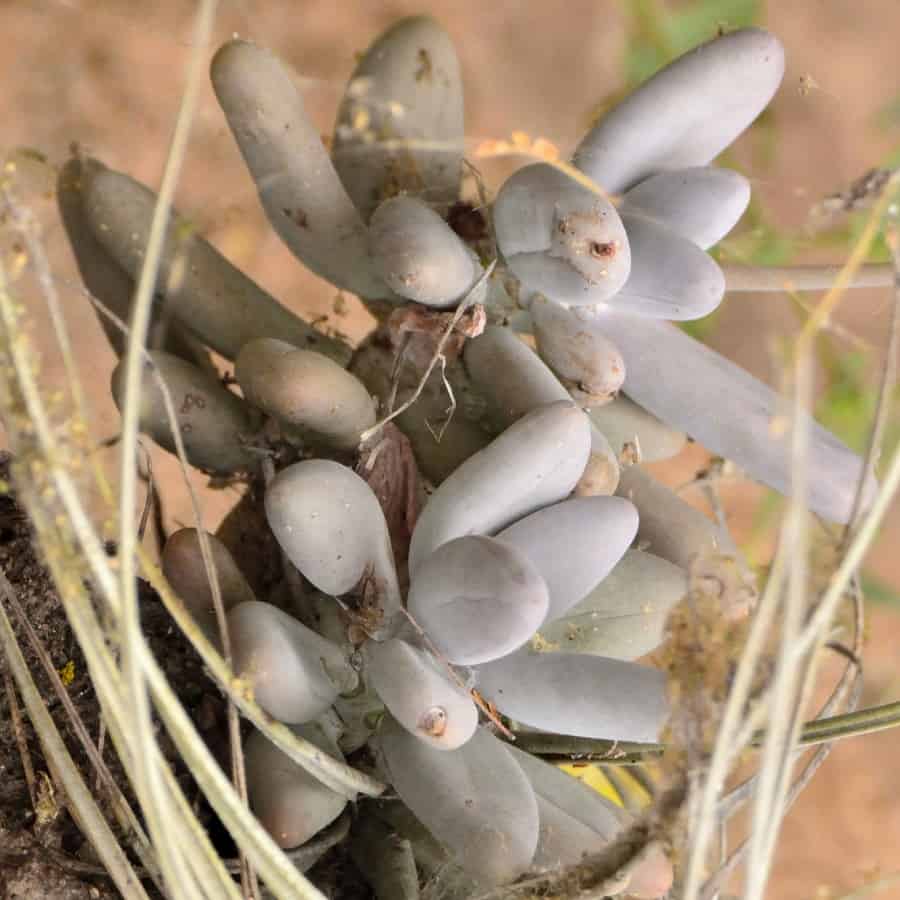
Get ready to be amazed by Pachyphytum caesium! This succulent is a true wonder to behold. With its rounded shrub-like appearance, it stands out from the crowd. The leaves of Pachyphytum caesium have a unique pattern and come in different colors, especially when stressed by cold or drought. It’s like a succulent chameleon! This plant will add a touch of beauty and uniqueness to any succulent collection.
Pachyphytum clavifolium
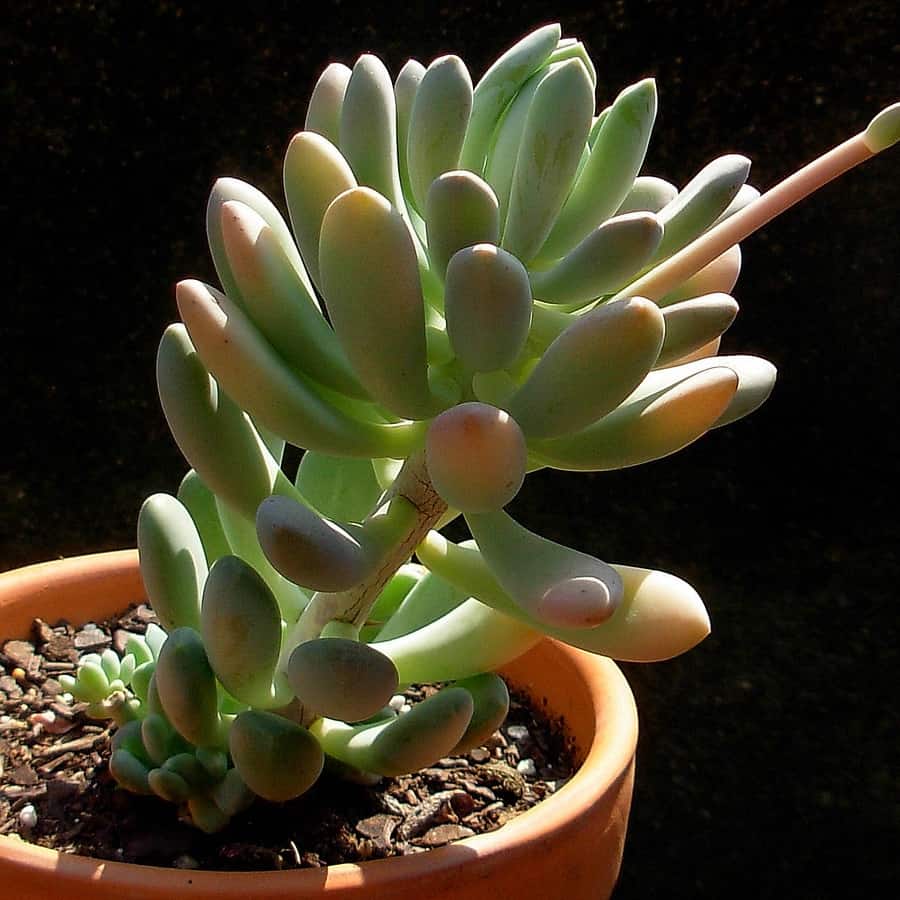
Get ready to meet a succulent that’s as fascinating as its name: Pachyphytum clavifolium! This unique plant boasts distinctively shaped leaves that resemble little clubs or batons. The leaves are thick and cylindrical, adding to its charm. With a cool glaucous blue coloration and a delicate sheen on its surface, this succulent is like a hidden treasure waiting to be discovered. Pachyphytum clavifolium is sure to capture your attention and become a standout feature in your succulent collection.
Pachyphytum compactum
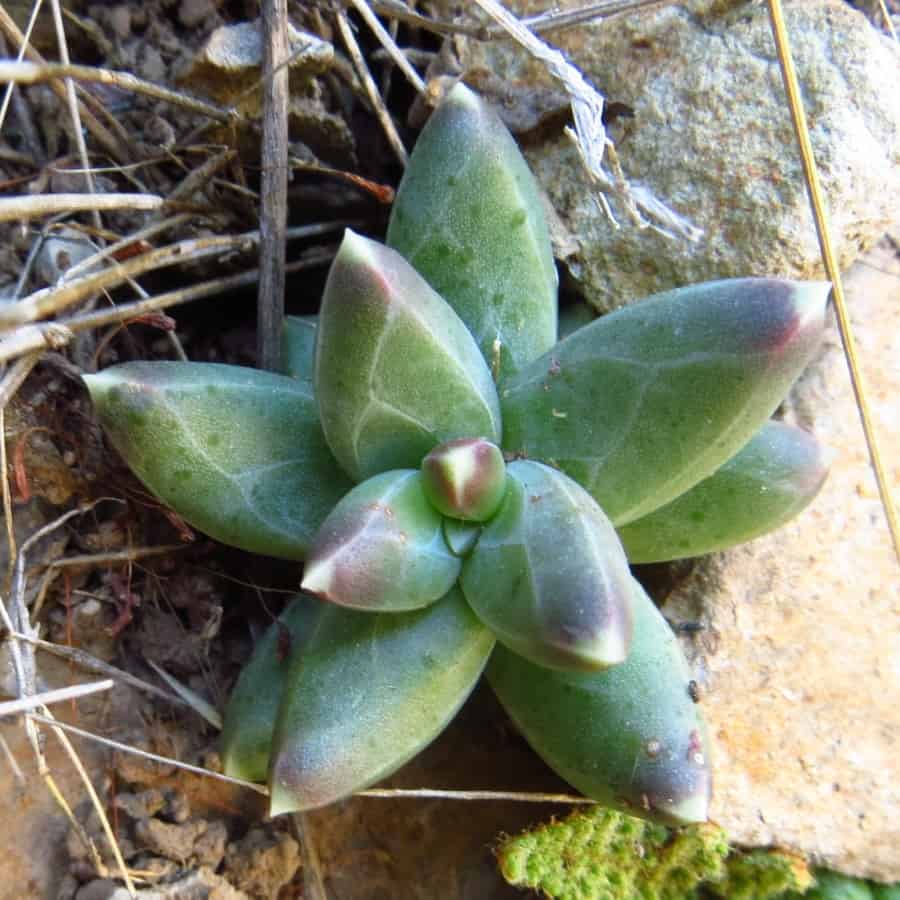
Looking for a succulent that’s both cute and compact? Pachyphytum compactum is the perfect choice. This little gem has a short stem and tightly packed branches, creating a rosette that’s close to the ground. The leaves steal the show with their incredible colors and patterns, especially when they experience cold or drought. It’s like a tiny masterpiece in your garden!
Pachyphytum fittkaui

Prepare to be wowed by Pachyphytum fittkaui! This succulent is a real stunner with its unique features. It showcases thick, plump leaves that are beautifully arranged in a cluster. The leaves have a gorgeous shade of pink and a subtle glaucous bloom. With its captivating appearance, Pachyphytum fittkaui will surely steal the spotlight in your succulent collection.
Pachyphytum glutinicaule
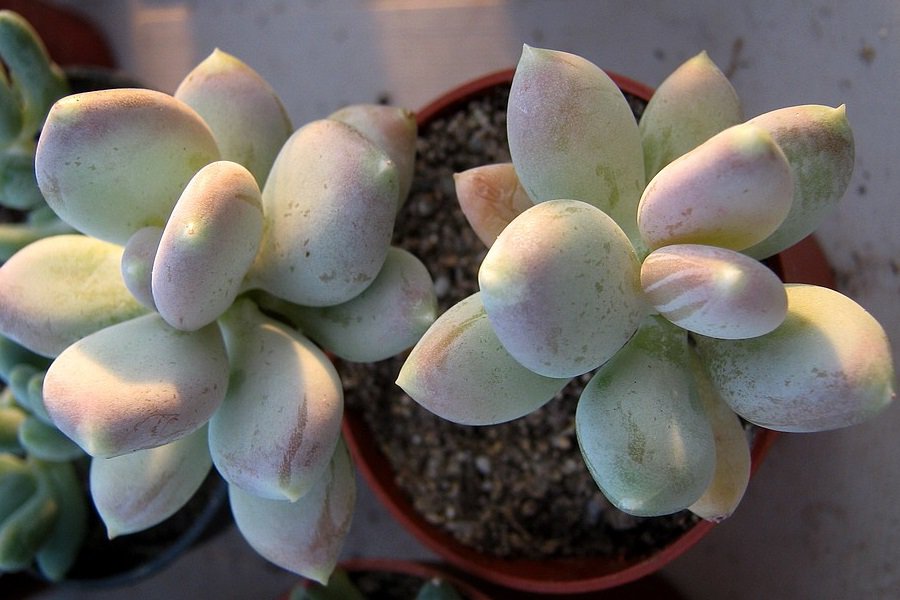
Get ready to meet a succulent that’s truly captivating: Pachyphytum glutinicaule! This plant has a unique appeal with its thick, fleshy leaves that are covered in a sticky substance. Don’t worry, though, it’s completely natural! The leaves have a lovely green coloration, and when you observe them closely, you’ll notice a glaucous hue. Pachyphytum glutinicaule is a real showstopper that will add a touch of intrigue to your succulent family.
Pachyphytum hookeri
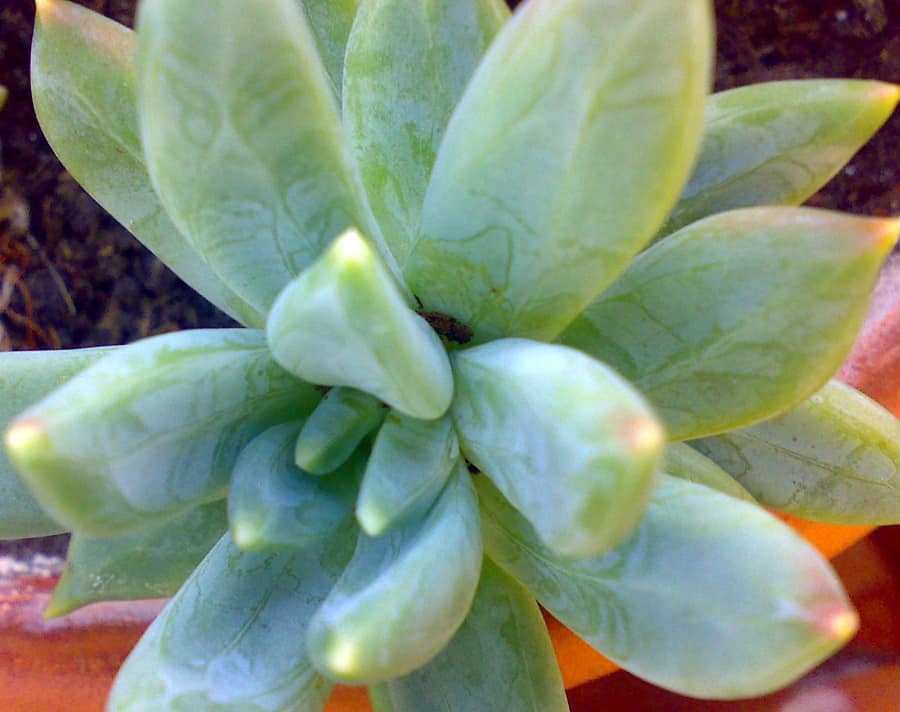
Say hello to Pachyphytum hookeri, a succulent that’s as fascinating as it is attractive. This plant, also known as Pachyphytum aduncum, is quite popular among succulent enthusiasts. Its flowers may remind you of an Echeveria, but with a unique twist. The leaves, arranged in an open rosette, are thick, cylindrical, and have a beautiful glaucous blue shade. They even have a sugary sheen that adds a touch of magic. You might find variations of this plant with bright green leaves or even a cristate form. No matter which version you choose, it’s sure to be a showstopper.
Pachyphytum kimnachii
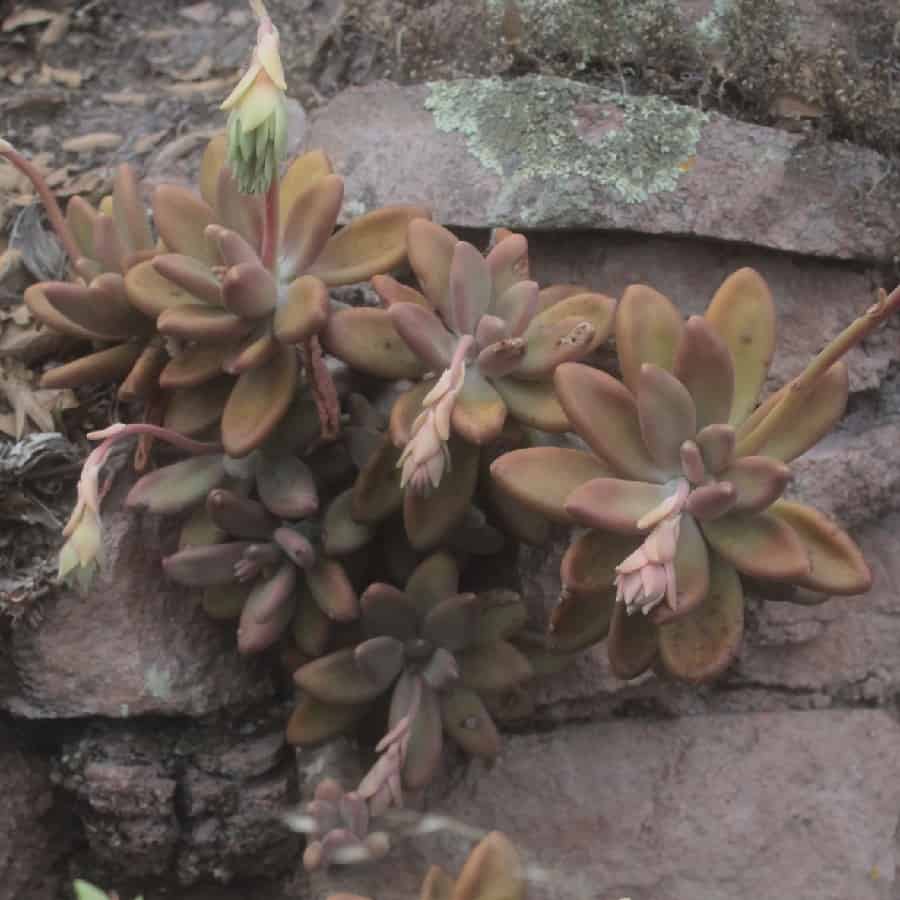
Looking for a succulent that’s out of this world? Pachyphytum kimnachii is here to take your breath away. This fascinating plant has elongated leaves that will grab your attention. With its unique shape, it’s like having a little alien friend in your garden. The leaves have a beautiful shade of green and a cool glaucous bloom that adds an extra touch of magic. Trust us, you won’t find anything else quite like it.
Pachyphytum longifolium
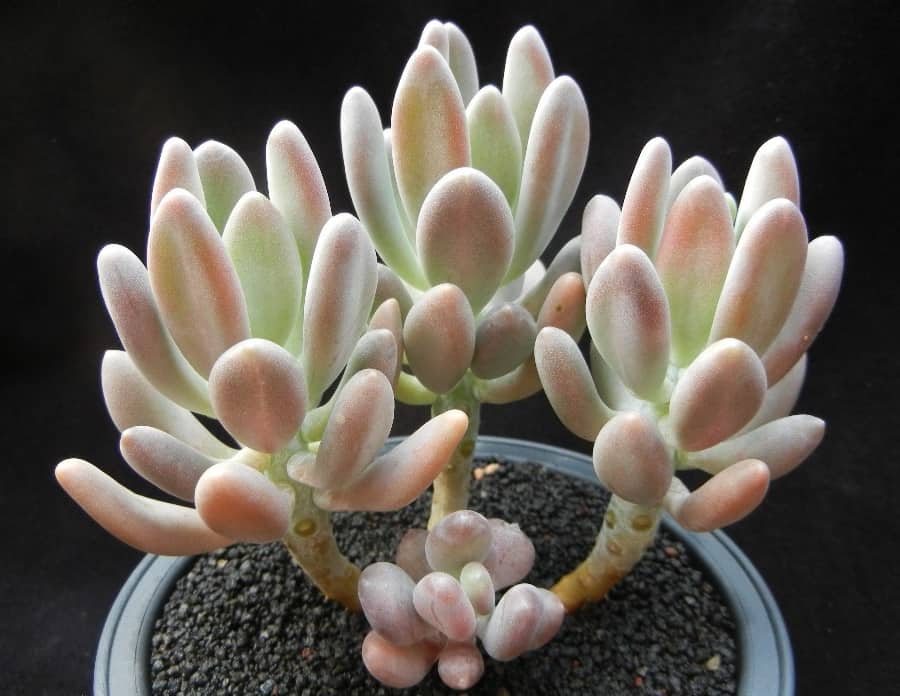
Looking for a succulent that’s both elegant and striking? Pachyphytum longifolium is the one for you! This beauty showcases long and narrow leaves that create a visually appealing display. The leaves have a lovely shade of green, and their elongated shape gives the plant an exquisite touch. With its unique characteristics, Pachyphytum longifolium will make a statement in any succulent arrangement or garden.
Pachyphytum oviferum
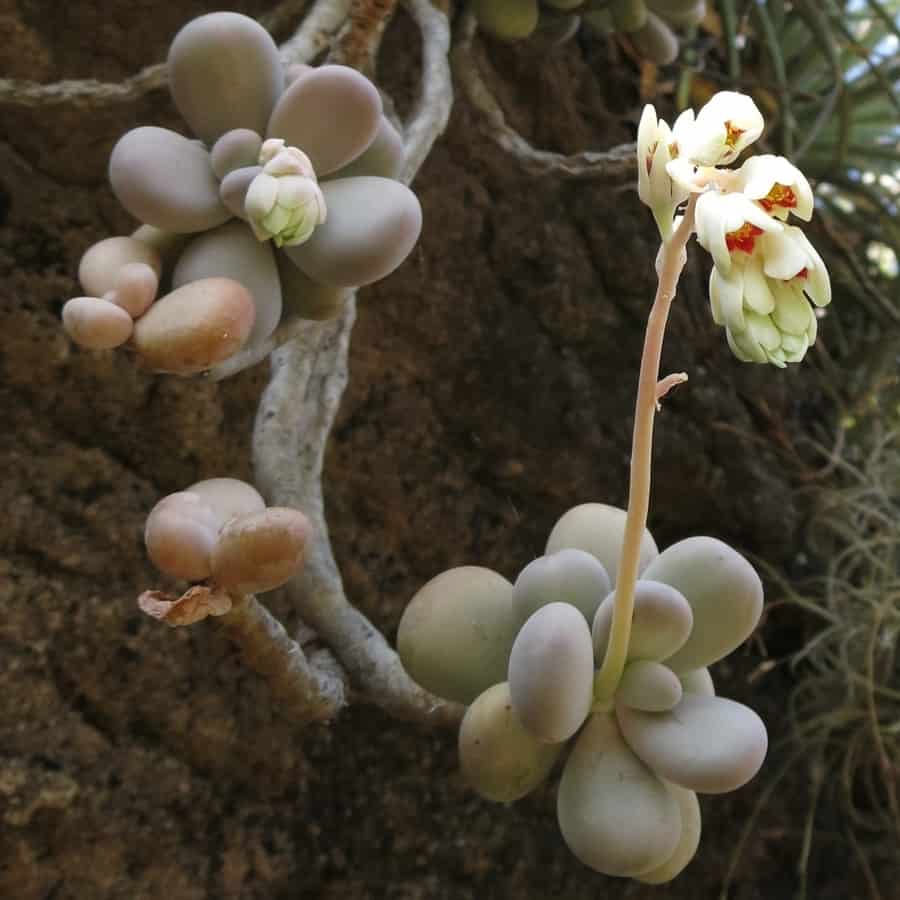
Looking for a succulent that’s simply out of this world? Pachyphytum oviferum, also known as Pachyphytum Moonstones, is here to take you on a celestial journey. This enchanting plant has chubby, rounded leaves that resemble little moons. The leaves have a beautiful silvery-grey color with a touch of pink, making them look like they belong in the night sky. It’s like having a piece of the moon right in your own home.
Pachyphytum saltense
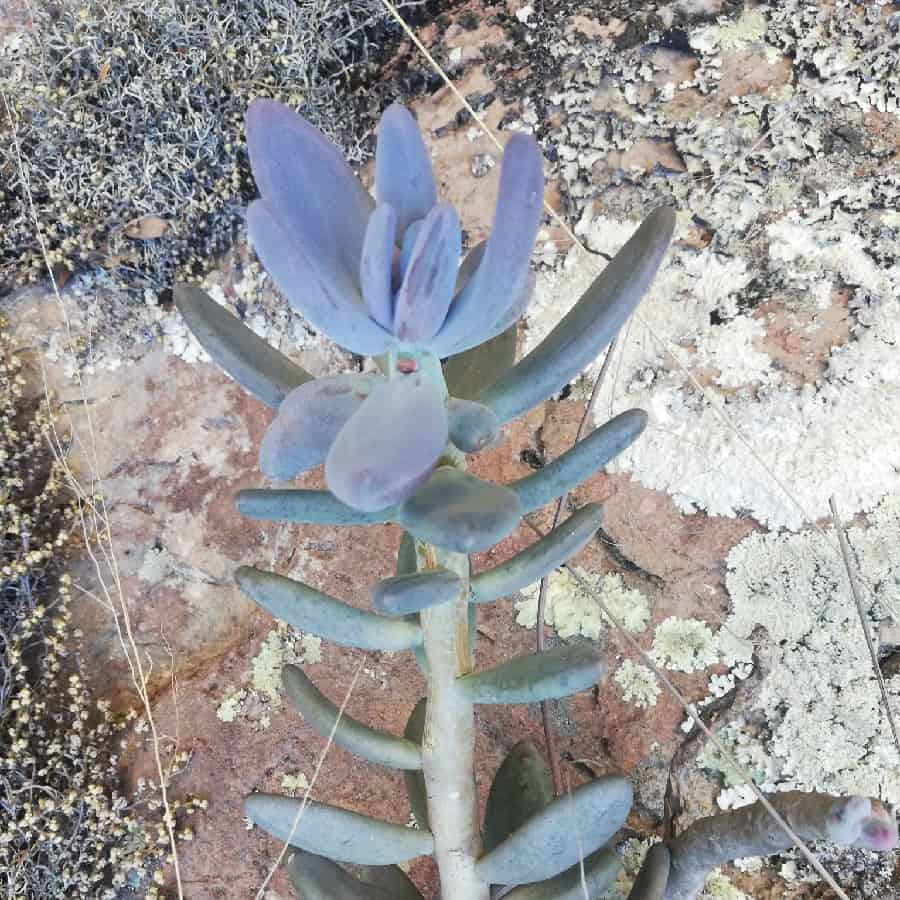
Get ready to add a touch of uniqueness to your succulent collection with Pachyphytum saltense. This plant has a distinctive look that will make it stand out from the rest. Its leaves have a stunning shade of green, and when stressed by cold or drought, they become even more colorful and vibrant. With its eye-catching appearance, this succulent will be the talk of the town.
Pachyphytum viride
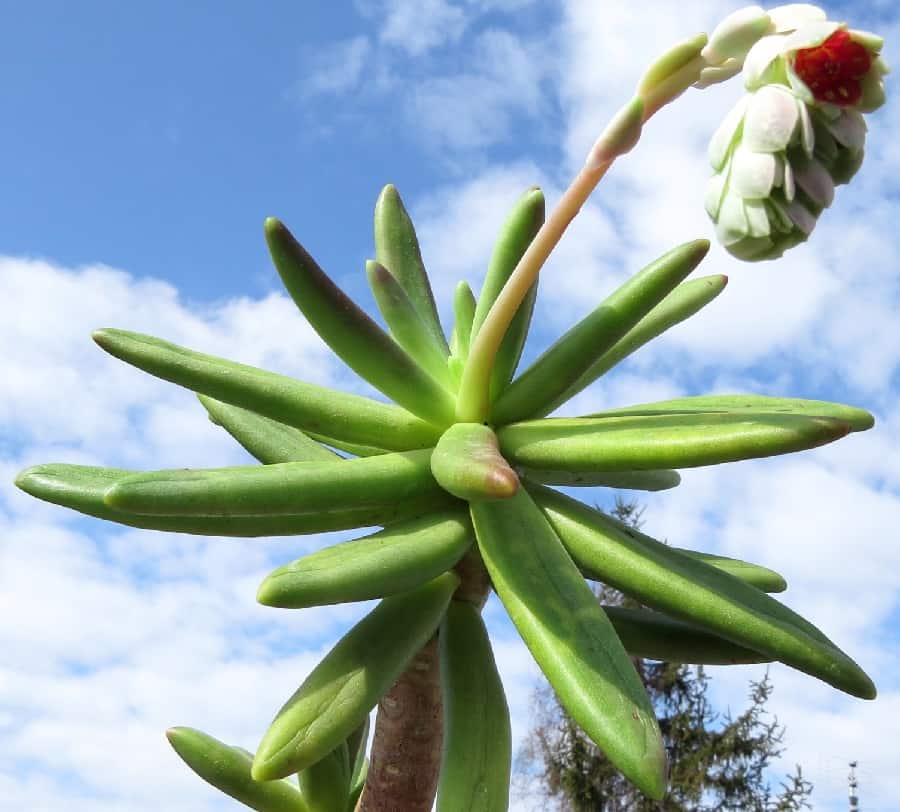
Looking for a succulent that exudes freshness and vibrancy? Pachyphytum viride is the perfect choice. This plant has leaves that are lush and green, creating a refreshing and lively atmosphere wherever it’s placed. With its simple yet captivating beauty, this succulent will bring a breath of fresh air to your space.
Pachyphytum werdermannii
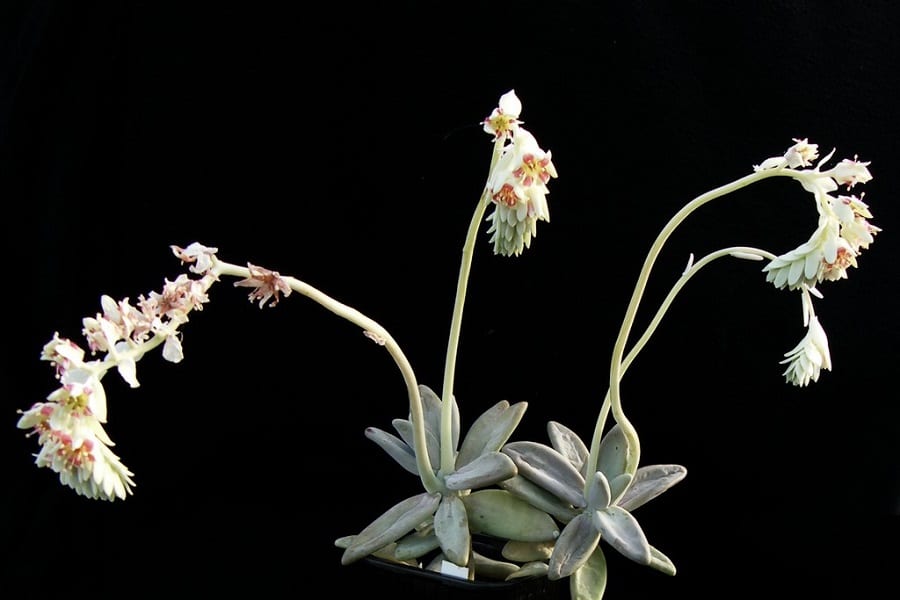
Prepare to be fascinated by Pachyphytum werdermannii! This succulent has a truly unique look that will capture your attention. Its leaves have a beautiful shade of green, and when viewed up close, you’ll notice a mesmerizing pattern. With its captivating appearance, this plant will add a touch of intrigue and wonder to your succulent collection.
Related Post:
Echeveria vs Pachyphytum: 3 Interesting Differences and Similarities
How to Care for Pachyphytum
If you’ve brought home a Pachyphytum succulent, good news! These plants are pretty easy to take care of, which is why they’re so popular as houseplants. They have lovely leaves that make them great decorative additions to any space. Let’s dive into the care tips to keep your Pachyphytum healthy and happy!
Light Requirements
Pachyphytum succulents thrive in bright sunlight. Whether you keep them indoors or outdoors, they need some amount of sunlight daily. They can handle direct morning sunlight well, but be careful with intense afternoon sunlight, as it can damage the leaves. If your Pachyphytum is outdoors, use a sheet or cloth to protect it during those intense hours. Indoors, place it in a spot that receives partial sunlight throughout the day.
Water Requirements
Like most succulents, Pachyphytum plants don’t like too much water. Overwatering can cause root rot, so it’s important to find the right balance. Check the soil before watering—only water if the top four inches of soil are dry. If the leaves feel soft to the touch, it’s a sign that the plant needs water. But if the leaves look plump, there’s enough water stored, and you can hold off on watering. When you do water, make sure to avoid getting water on the leaves, as this can lead to damage and rotting.
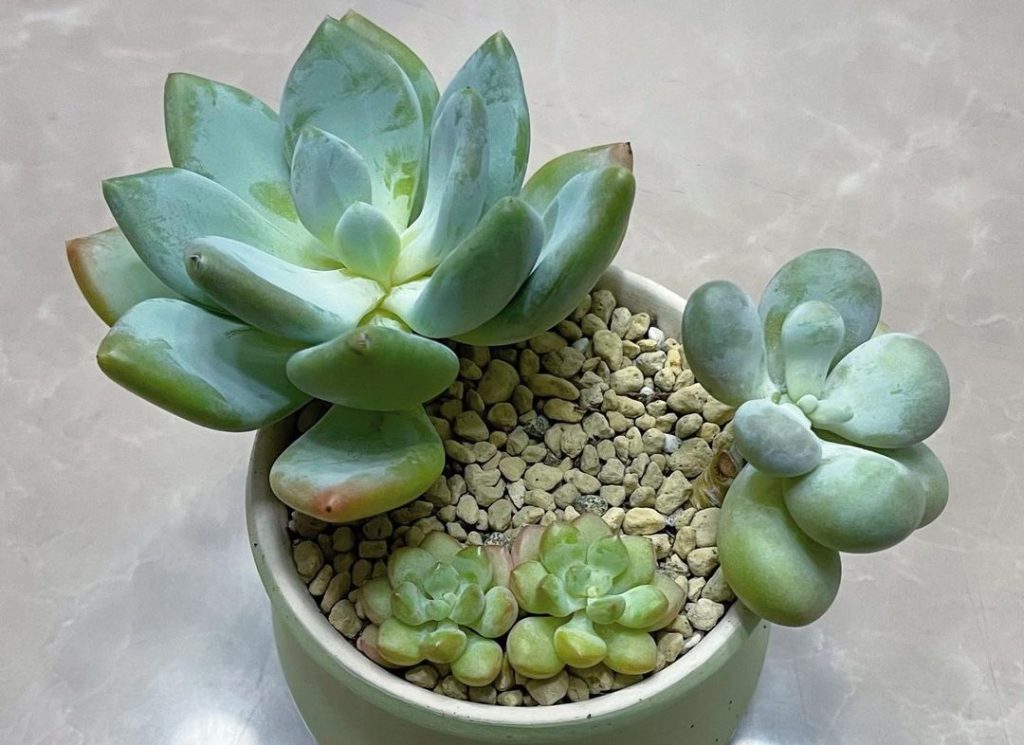
Soil Requirements
Pachyphytum succulents aren’t too picky about soil quality, but good drainage is essential. You can use a pre-made succulent potting mix or make your own by combining regular potting soil with sand and perlite or pumice. The goal is to ensure that the soil doesn’t hold excess moisture around the roots.
Read also:
Best Soil for Succulents in Pots
Climate Requirements
Pachyphytum succulents thrive in hot climates and can handle high temperatures. However, they’re sensitive to low temperatures and can’t tolerate frost. Make sure to protect your outdoor Pachyphytum during winter frost by covering it with a sheet. Avoid exposing them to temperatures below 45 degrees Fahrenheit for extended periods, as it can harm or even kill the plant.
Fertilizer Requirements
During the active growth phase, which is usually in warmer months, you can fertilize your Pachyphytum succulent once a month. Dilute a succulent fertilizer (best ones here) according to the instructions and apply it to the soil.
Potting and Repotting
For potting Pachyphytum succulents, choose a well-draining container with drainage holes. Repotting is generally needed every two years, as the roots grow slower than the leaves. The best time for repotting is in April, but make sure to use well-drained soil and handle the roots gently.
How to Propagate Pachyphytum
If you want to expand your Pachyphytum succulent collection or share the joy of these beautiful plants with others, propagating through leaf and stem cuttings is a rewarding and fun method. By following a few simple steps, you can grow new Pachyphytum plants from the parent plant. Let’s explore the two common propagation methods: leaf cuttings and stem cuttings.
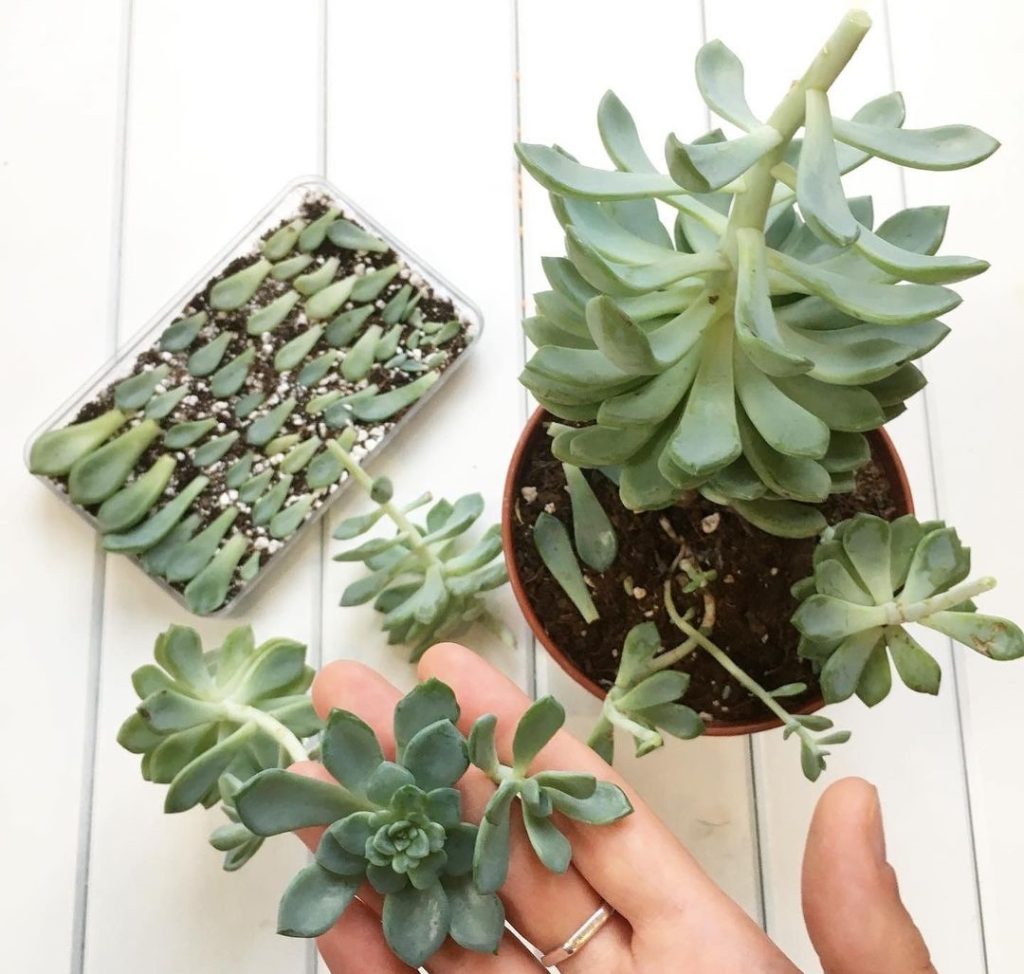
Leaf Cuttings:
- Selecting the Leaf: Look for a healthy mature leaf from the center of the rosette. Gently remove the leaf from the stem, ensuring that you leave a clean cut without any damage to the remaining stem or leaf.
- Callous Formation: Place the leaf in a well-ventilated area away from direct sunlight. Let it sit for about a day or two, allowing the cut to dry and callous. This step helps prevent rot during the rooting process.
- Rooting Medium: Prepare a suitable rooting medium, such as a combination of perlite and well-draining succulent soil, or use a commercial cactus soil mix. Make sure the medium is moist but not waterlogged.
- Planting the Leaf: Dip the calloused end of the leaf in a rooting hormone powder (optional), which can promote root growth. Gently insert the calloused end of the leaf into the moist rooting medium, burying it about an inch deep. Ensure the leaf is secure and upright.
- Root Development: Place the container in a warm, bright location with indirect sunlight. Maintain a consistent level of moisture in the rooting medium, misting it periodically but avoiding excessive watering. After a few weeks to a couple of months, roots should begin to develop from the base of the leaf.
- Growth and Transplanting: As the new Pachyphytum rosette emerges and develops its own roots, it’s time to transfer it to a well-draining potting mix suited for Pachyphytum. Carefully remove the leaf and plant the new rosette, ensuring it sits at the same depth as it was during propagation. Water sparingly initially and gradually increase as the plant establishes.
Stem Cuttings:
- Selecting the Stem: Choose a healthy stem from the parent plant that is at least 2-3 inches long. Use a clean, sharp knife or pruning shears to make a clean cut just below a node, which is where the leaves emerge from the stem.
- Callous Formation: Similar to leaf cuttings, allow the cut end of the stem to dry and callous for a day or two. This helps prevent potential rot during the rooting process.
- Rooting Medium: Prepare a well-draining soil mixture or use a commercial cactus mix. Ensure the medium is moist but not waterlogged.
- Planting the Stem: Dip the cut end of the stem into a rooting hormone powder (optional) to enhance root development. Insert the treated end into the moist rooting medium, burying it about an inch deep.
- Root Development: Place the container in a warm, bright location with indirect sunlight. Keep the soil slightly moist, but avoid overwatering. Root growth should occur within a few weeks, and new leaves may emerge from the top of the stem.
- Growth and Transplanting: Once the stem has rooted and new growth has developed, you can transplant the new Pachyphytum into a well-draining potting mix suitable for its growth. Water sparingly initially and gradually increase as the plant acclimates to its new pot.
Remember that the propagation success rate may vary, and it requires patience and care. Not every leaf or stem cutting will successfully root and grow, so it’s always a good idea to propagate multiple cuttings to increase your chances of success. With practice and experience, you’ll become proficient in propagating Pachyphytum succulents, expanding your collection and sharing the joy of these remarkable plants with others.
